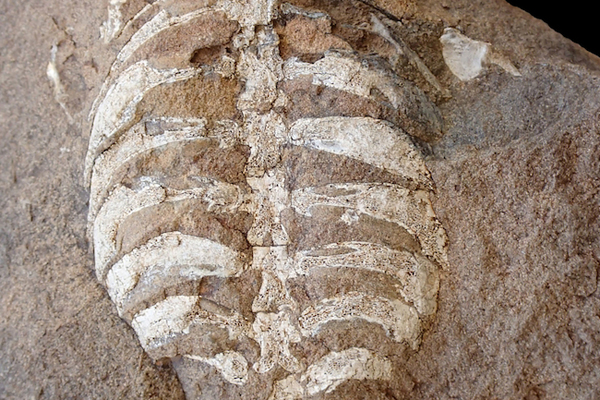How Turtles Got Their Shells

Turtle shells, which turn out to be complex structures made up of 50 bones, evolved long before dinosaurs roamed the earth, according to new research.
Turtles and their shells now predate the Jurassic period, according to a study in the latest issue of Current Biology. It’s a body design that was built to last, representing millions of years of fine-tuning.
VIDEO: Millions of Turtles Killed Due to Bycatch
The shells began their transformation more than 260 million years ago in the Permian period, said Tyler Lyson, of Yale University and the Smithsonian, in a press release. “Like other complex structures, the shell evolved over millions of years and was gradually modified into its present-day shape.”
The shell looks like just one solid shield, but because it’s made up of multiple bones, it is formed through the fusion of the turtle’s ribs and vertebrae.
“The reason, I think, that more animals don’t form a shell via the broadening and eventually suturing together of the ribs is that the ribs of mammals and lizards are used to help ventilate the lungs,” Lyson said. “If you incorporate your ribs into a protective shell, then you have to find a new way to breathe!”
He explained that turtles have done just that, with the help of a muscular sling.
Sign up for the Live Science daily newsletter now
Get the world’s most fascinating discoveries delivered straight to your inbox.
That system evolved in relatives of the turtle such as Eunotosaurus. Discovery of a well-preserved fossil of this extinct South African reptile allowed Lyson and his team to fill a 55-million-year-old gap in the turtle fossil record, showing how the shell formed.
NEWS: Turtle Gets New Pair of Artificial Flippers
Before the find, the world’s oldest known turtle ancestor was Odontochelys semitestacea, a reptile about 220 million years old. It had a fully developed plastron – the belly side of the shell — but only a partial carapace on its back.
Like turtles, Eunotosaurus had nine broadened ribs and lacked intercostal muscles that run between ribs in certain other animals.
The ribs of these animals locked up into the protective outer shell, so the species sacrificed some movement and breathing flexibility for safety. These water dwelling reptiles with soft bodies needed protection both from above and below.
This story was first published on Discovery News.









